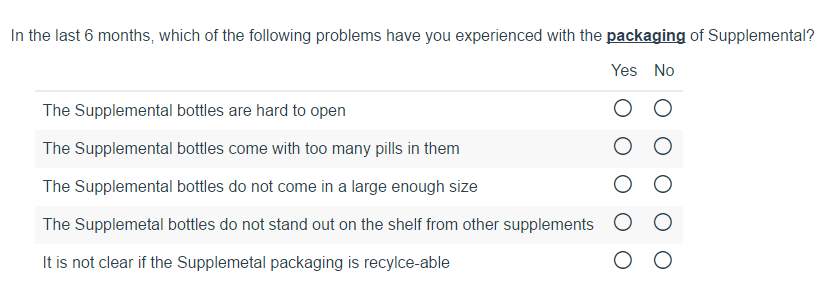
“Mirror, mirror, on the wall, how farest the customer, if at all?”
In a SurveyGizmo webinar last week, Marni Zapin, of Rumble Research, shared the results of a mirror analysis she conducted for a health supplements company. Her client wanted her to identify areas that dissatisfied their customers, prioritize improvements, and “identify the disconnect between what customers see as a problem and what internal teams see as problems.”
To this end, she first conducted 20 IDIs (In-Depth Interviews) with customers and 8 IDIs with employees. From this, and a review of past research conducted by the client, Marni came up with a list of 100 problems customers might experience. She categorized these and developed a subset of the 50 most common problems.
Marni then wrote a questionnaire asking about each problem. To her mind, a good problem statement:
- Lists only one problem per statement
- Includes only problems that that the company can fix and is willing to fix
- Are phrased as action statements
- Are directed to the respondent
Example:

The overall structure of the questionnaire was:
- Screener
- Satisfaction Attributes
- Dissatisfaction Statements
- Demographics
With the questionnaire designed, Marni fielded a quantitative survey of almost 400 customers to ask if they had experienced any of the 50 common problems. She then fielded a similar questionnaire to 25 employees. “Some of the dissatisfaction statements needed to be modified so that they made sense to a new audience,” Marni said, “but we wanted to keep them as similar as possible for comparison purposes.” Her wording for the employee survey:
For the following questions please identify, based on your experience and knowledge, the challenges you believe your customers may have experienced with the packaging of Supplemental?
Customers reported experiencing an average of 22 of the 50 problems. Employees reported an average of 17 problems they expected customers to experience. While customers most frequently selected packaging as a problem, employees thought that cost and availability were the most frequent problems.
“Mirror analysis measures the difference between the actual customer experiences and what employees believe those customers’ experiences to be,” Marni said. For instance, 82% of customers reported that the bottles were hard to open, but only 32% of employees perceived that to be a problem. The mirror analysis calculation is -50, revealing that employees severely underestimate the problem.
Based on the research, Marni recommended employee training and field interactions, new product sizes (bigger and smaller), and a redesign of the bottle.
Check out the SurveyGizmo webinar recording for more details from Marni. For more on this topic, check out Pierre Mourier’s article for Performance Improvement, “Mirror analysis. How to achieve customer-driven human performance.”